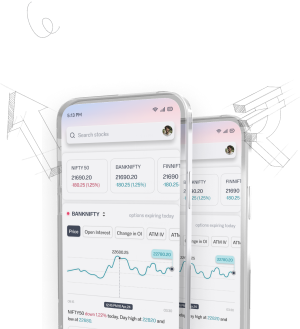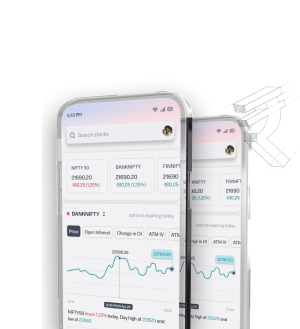Ichimoku Kinko Hyo: Ichimoku Cloud Charts by Goichi Hosoda
Goichi Hosoda developed the Ichimoku Kinko Hyo, which turned out to be a very useful tool for traders. It gives a full picture of the market trends. This method shows support, resistance, and momentum together with the use of several indicators. The name literally means "a chart that shows balance at a glance." It presents complicated data in an easy way. By understanding the Ichimoku Cloud, one can make their strategies better and gain clearer insights into the market.
Important Principles
- Ichimoku Kinko Hyo gives a comprehensive view of market trends.
- It comprises five lines that consist of the Conversion Line and Base Line.
- The way the clouds look shows important support and resistance points.
- It was developed by Goichi Hosoda before the Second World War.
Understanding the Ichimoku Cloud can improve trading accuracy.
Introduction of Ichimoku Kinko Hyo
Ichimoku Kinko Hyo is one of the very strong trading systems applied in technical analysis. It gives the trader a full picture of market trends. There are five major elements to this method that help us quickly grasp price movements.
The Ichimoku Cloud expresses the areas of support and resistance. This makes the search for trading opportunities very easy. Ichimoku Kinko Hyo brings together many indicators into one system. This helps make it easier to analyze market trends and shows where prices could go. It helps both new and experienced traders improve their plans.
- One can ensure an ideally structured trading approach.
- Its indicators can change to fit different market situations.
- This system provides significant information related to both short-term and long-term trading.
So many resources can be used with Ichimoku Kinko Hyo, such as "Trading with Ichimoku Clouds: The Essential Guide to Ichimoku Kinko Hyo Technical Analysis." This book teaches us the technical analysis of this system.
| Feature | Description |
|---|---|
| The Ichimoku Cloud consists of five important lines. | |
| Visualization | Clear representation of market trends |
| Flexibility | Good for different trading methods |
| Learning Resources MORE | Books; courses that go deeper. |
First, let us understand the basics of the indicator Ichimoku Kinko Hyo. This shall help us leverage it to the hilt in our trading strategies.
A story on Ichimoku Cloud and Goichi Hosoda
Goichi Hosoda created the Ichimoku Cloud in the late 1930s. He worked on it for over 30 years before sharing it in 1968. This method, which means "one glance," clearly displays market trends.
The first country to use Ichimoku Kinko Hyo was Japan. However, by the 1990s, traders everywhere saw its value. It has five main parts: Tenkan-sen, Kijun-sen, Senkou Span A, Senkou Span B, and Chikou Span.
The cloud's thickness shows the support and resistance levels. A thick cloud means strong levels, which matter in trading. Color changes of the cloud also help, with green for up trends and red for down trends.
This has made Ichimoku Cloud very popular and an indicator that is in use today on a number of markets.
"What makes it very important for traders today is that the Ichimoku Cloud shows the very general market trend."
Goichi Hosoda's work has changed how people analyze markets. The Ichimoku Cloud is now an important tool in trading software and platforms. This shows how his special method continues to influence the field.
Learning the Main Components of the Ichimoku Cloud
We will show you the key parts of the Ichimoku Cloud. These tools play an important role in analyzing the market. Each part has a special job to help us see the market trend and find the trading opportunities. Let's discuss these Ichimoku Cloud parts in detail.
Tenkan-Sen: The Conversion Line
The conversion line is the Tenkan-Sen. It is a nine-period line derived from the highest high and the lowest low over nine periods. This line gives short-term momentum, which helps in making quick decisions in a variable market.
Kijun-Sen: The Main Line
The Kijun-Sen is the main line. It is derived by taking the highest high and the lowest low over the last 26 periods. This represents long-term trends and helps to forecast future price movement. Price crossing with that line provides us with key trade signals.
Senkou Span A and B: The Cloud Edges
The Senkou Span A and B forms the cloud boundaries. The Senkou Span A is the average of the Tenkan-Sen and Kijun-Sen plotted 26 periods ahead. The Senkou Span B is the average of the highest high and the lowest low over 52 periods, also 26 periods of time into the future. Together, they make the cloud, which helps us determine support and resistance.
Chikou Span – lagging line
The Chikou, or the lagging line, shows the closing price from 26 periods ago. It confirms trends and helps in understanding the feelings of the market. It, together with the rest of the parts of the Ichimoku Cloud, helps us make better decisions while trading.
| Component | Calculation Period | Purpose |
|---|---|---|
| Tenkan-Sen | 9 periods | Indicates short-term momentum |
| Kijun-Sen | 26 periods | Predicts long-term trends |
| Senkou Span A | 26 periods in the future | Cloud edge; support and resistance |
| Senkou Span B | 52 periods ahead | Cloud edge; support and resistance |
| Chikou Span | 26 periods back | Confirms trends; market sentiment |
Learning about the parts of the Ichimoku Cloud helps us make our trading strategy better. We can look at markets with more confidence.
How the Ichimoku Trading System Works
This has five main components to show market trends and gives trading signals. This is a strong tool of the Ichimoku Trading System. This system works well with different time frames and types of assets, especially with JPY pairs.
The essential technical indicators are part of the Ichimoku Trading System.
- Tenkan-Sen: This line in red color denotes market trends. It is the average of the highest price and the lowest price over the last nine periods.
- Kijun-Sen: The blue line shows the average of the highest high and the lowest low for the last 26 periods. It helps predict future price changes.
- ALL is made up of the orange lines, or the orange lines make up the cloud. Senkou Span A is comprised from averaging Senkou-Span A and 26 periods into the future, while Senkou Span B averages the highest high and lowest low over 52 periods, 26 periods into the future.
- Chikou Span: A green line that represents today's closing price but 26 periods ago. It offers more signals to traders.
Knowing these will help us trade better. If the price is above the Senkou Span, then the top line is the first support level, and the bottom line is the second support level. If the price is below, then the bottom line is the first resistance level and the top line, the second resistance level. The Ichimoku aims to align our trades with the trend at all times. Bullish signals materialize when the Chikou Span appears above the prices, and bearish signals appear when it appears below. This helps us not to be against the direction of the market with our trades.
This, finally, is the message the Ichimoku Trading System extends: a broad view of the market trend, and hence one can differentiate between approaches critically to fit more effectively to the financial market.
| Indicator | Calculation Method | Purpose |
|---|---|---|
| Tenkan-Sen | (Highest High + Lowest Low) / 2 (9 Periods) | Indicates market trend |
| Kijun-Sen | (Highest High + Lowest Low) / 2 (26 Periods) | Forecasts future price movement |
| Senkou Span A | (Tenkan-Sen + Kijun-Sen) / 2 (26 Periods Ahead) | First cloud boundary indicating support/resistance |
| Senkou Span B | (Highest High + Lowest Low) / 2 (52 Periods, 26 Periods Ahead) | Second cloud boundary indicating support/resistance |
| Chikou Span | Today's Closing Price (26 Periods Back) | Indicates current price relationship to historical prices |
Indicators and signals for Ichimoku Kinko Hyo.
Ichimoku Kinko Hyo allows us to make better trade decisions by considering past prices and current data in illustrating a complete picture of market trends.
Kumo Breakout: Key Trading Signal
A Kumo breakout is a major signal on the Ichimoku. It shows us whether a trend is starting or ending. A move in price above or below the cloud is one of those signals.
Staying above the cloud means that the trend is rising, and going below it means we should be cautious. It is a signal that indicates the time for buying or selling.
Crossovers: Understanding Tenkan-Sen and Kijun-Sen
The watching of Tenkan-Sen and Kijun-Sen crossovers gives important information to the market. If Tenkan-Sen moves to the top side of Kijun-Sen, prices may go higher; if it moves below, prices will likely move lower.
Understanding these signal inputs helps us make quick and intelligent decisions in the market.
Benefits of Using an Ichimoku Cloud in Trading
The Ichimoku Cloud is an excellent choice for those traders seeking simple, clean market information. It integrates so many market factors seamlessly into one simple format. That allows us to quickly find important trading chances.
It is efficient in displaying areas of resistance and support. From observing the Ichimoku Cloud, we can see where supporting trends may shift. It helps us take better trading decisions and advance our methods.
Versatility: It works with different assets and time frames, useful for short and long trades. Market analysis: Shows the tendency of prices and market conditions by using Tenkan-Sen and Kijun-Sen.
Visual simplicity: its simple design helps users to pick it up and use it quickly for trading.
We can combine it with something like the Relative Strength Index when used with other tools to get better signals.
The Ichimoku Cloud also aids in managing risks since it clearly indicates where the stop-loss and profit targets are set. As a result, there is a more ordered way of trading.
| Module | P |
|---|---|
| Tenkan-Sen | Conversion line |
| Kijun-Sen | Base line |
| Senkou Span A & B | Leading spans |
| Chikou Span | Lagging line |
In conclusion, the Ichimoku Cloud has many advantages for trading. It makes market analysis easier and improves trading strategies. Using this tool helps us handle trading's challenges with more confidence and clarity.
Disadvantages and Critiques of Ichimoku Kinko Hy
A problem that does really emerge for traders is the complexity of the Ichimoku Cloud. This probably is the biggest of all, as the chart comes with five main parts. These main five could really challenge the new trader.
It also depends too much on old data. This makes people question how well it can predict the future. Markets change quickly, making old information not very helpful during unstable times. This can lead traders to overlook important changes in the market.
Some critics say the Ichimoku Cloud is too based on personal opinion. Different traders can notice different things, which leads to different trading decisions. Also, it does not guarantee success. Good risk management is still important for trading successfully.
| Limitation | Description |
|---|---|
| Chart Complexity | Numerous lines can confuse new traders, making it harder to spot signals at once. |
| Predictiveness | Using past data assumes that market conditions remain the same, throwing the relevance of signals into doubt. |
| Only different interpretations can make users differ in their trading decisions. | |
| No Guarantee of Success | Like other indicators, it needs good risk management practices to reduce possible losses. |
Understanding these criticisms will help us in using the Ichimoku Cloud with effectiveness. We can use it in conjunction with the knowledge of its limitations.
Inference
This review of Ichimoku Kinjo Hyo has presented us with complex components: Tenkan-sen, Kijun-sen, Senkou Span A and B, and Chikou Span. Those lines present to us market trend and price change. Therefore, at first, this indicator may sound kind of convoluted. This is very useful since it makes very complicated analysis easy to see. This helps us make better trading decisions. Goichi Hosoda made his work in the end of the 1930s, and important success in it. His method still helps traders now. By using the main points from this article, we can make our trading plans better. Remember that Ichimoku Kinko Hyo performs optimally in medium and long-term trades. Using that along with other tools gives us much better results. As we continue trading, the Ichimoku cloud will assist us in comprehending the market more. It's such an indicator that strengthens our trading plans. Our objective is to make better decisions and do good trading.
FAQ
What is Ichimoku Kinko Hyo?
Ichimoku Kinko Hyo is a technical analysis tool developed by Goichi Hosoda. It indicates market trends, support and resistance, as well as momentum—clear and easy ways to understand the complex data, so helpful for traders.
What are the core components of an Ichimoku Cloud?
The Ichimoku Cloud is broken down into five key parts, being Tenkan-Sen, Kijun-Sen, Senkou Span A, and B, and Chikou Span. These help traders see market direction and potential signals.
How does the Kumo Breakout signal work?
A Kumo Breakout occurs when the price breaks either above or below the cloud. This indicates if a trend is to remain or change. It is an all-important signal for traders to take further appropriate action.
What do the crossovers of Tenkan-Sen and Kij?
When Tenkan-Sen goes above Kijun-Sen, it means the market is going up. If it goes below, it means the market is going down. These signals help us make good trading decisions.
What are the benefits of the Ichimoku Cloud when trading?
The Ichimoku Cloud makes it easy to see market trends and changes. It helps identify support and resistance levels. Using it in trading enhances our understanding of the market and helps manage risk better.
Elaborate some of the limitations of Ichimoku Kinko Hyo Ichimoku Kinko Hyo
can be so hard to understand since it uses very complicated charts; besides, it uses past information, which sometimes cannot accurately predict the future. The understanding of these limitations helps us use it more effectively in trading.
How did the Ichimoku Cloud change over time?
Goichi Hosoda developed the Ichimoku Cloud in the late 1930s. He kept it as a secret for many years; to be shared with the people more than 30 years later in the late 1960s. It had an immediate rise to become critical technical analysis equipment worldwide.
Disclaimer
The content provided is for educational purposes only and does not constitute financial advice. For full details, refer to the disclaimer document.




